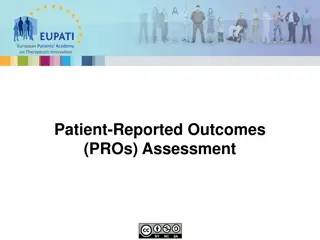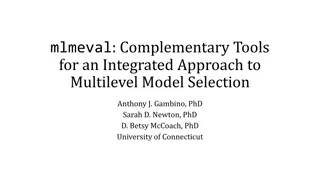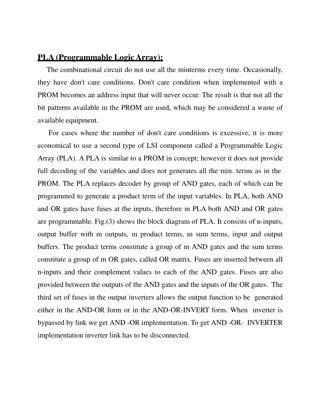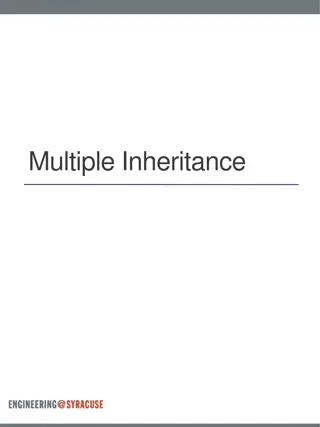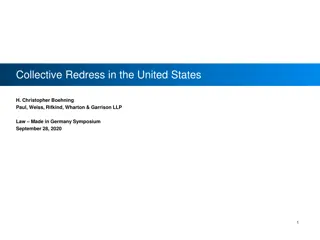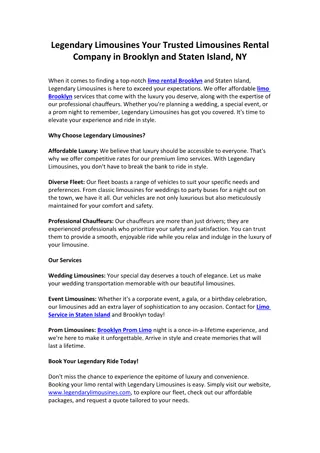
Understanding Patient-Reported Outcomes in Cancer Research
Discover the significance of patient-reported outcomes in cancer research, with a focus on head and neck cancer survivorship projects. Explore challenges, opportunities, and the pivotal role of patients in assessing health status, symptoms, and satisfaction with healthcare.
Download Presentation

Please find below an Image/Link to download the presentation.
The content on the website is provided AS IS for your information and personal use only. It may not be sold, licensed, or shared on other websites without obtaining consent from the author. If you encounter any issues during the download, it is possible that the publisher has removed the file from their server.
You are allowed to download the files provided on this website for personal or commercial use, subject to the condition that they are used lawfully. All files are the property of their respective owners.
The content on the website is provided AS IS for your information and personal use only. It may not be sold, licensed, or shared on other websites without obtaining consent from the author.
E N D
Presentation Transcript
Patient-Reported Outcomes Katherine Regan Sterba, PhD, MPH Medical University of South Carolina Tuesday February 10, 2015
Objectives To describe the growing movement of patient- reported outcomes measurement in cancer research. To highlight the specialized nature of patient- reported outcomes in head and neck cancer. To use examples of head and neck cancer survivorship research projects to highlight challenges, lessons learned and opportunities in assessing patient-reported outcomes.
What is a Patient-Reported Outcome?
Patient Reported Outcomes as Fundamental to Research Direct reports by patients about their health status, symptoms, functional status, satisfaction with health care National movement for development of quality measures Patient involvement in item generation is essential to content validity http://www.nihpromis.org/ Patrick et al, 2008 (Cochrane Patient Reported Outcomes Methods Group)
Measurement Challenges When a research field uses varied instruments, it is difficult to make conclusions across studies! Must consider both the psychometric properties of instruments and burden to respondents.
National Focus on PROs: US Food & Drug Administration Why use PROs as endpoints in clinical trials: Some treatment effects known only to the patient Formal assessment more reliable than informal FDA Statement (2006): During the planning of clinical development programs, the FDA encourages sponsors to specify what claims they seek, determine what concepts underlie those claims, and then determine whether an adequate PRO instrument exists to assess and measure those concepts. If it doesn t, a new PRO instrument can be developed. http://www.fda.gov/downloads/Drugs/GuidanceComplianceRegul atoryInformation/Guidances/UCM193282.pdf (2009)
National Focus on PROs: NIH Part of the NIH roadmap for medical research in the 21stcentury to accelerate medical research by pooling national resources Multi-center cooperative group initiative 2002 Patient-Reported Outcomes Measurement Information System (PROMIS) Focus on pain, fatigue, emotional distress, physical functioning, and social-role participation Model methods for measure development http://www.nihpromis.org/
NIH PROMIS Background To push for consensus and shared use of high-quality instruments in our research To adequately assess the concept of quality of life, a critical outcome not accounted for in clinical measures To quantify how people feel and function, assess burden of disease in research and facilitate clinical practice and patient management
NIH PROMIS: 3 Components 1. Develop measure development standards. 2. Disseminate libraries of PRO measures of health in multiple languages, for adults and children (with a variety of health statuses). 3. Provide access to PRO measures through the "Assessment Center". https://www.assessmentcenter.net/ https://www.assessmentcenter.net/documents/InstrumentLibrary.pdf
Domain Framework http://www.nihpromis.org/measures/domainframework1#com
Intervention Research Continuum: Focus on Head & Neck Cancer Content Validity Construct Validity Predictive Validity Understand factors that influence outcomes & identify high-risk groups Develop interventions to promote optimal health and well-being Characterize challenges facing head and neck cancer survivors Evaluate, refine & disseminate intervention MEASUREMENT Implementation/ Process Factors Clinical/Psychosocial Factors Short/Long- Term Outcomes
Pinpointing Patient-Reported Outcomes for Study Carefully define constructs of interest (what you want to measure). Consider theory. Think about unique patient characteristics/timeline of illness. Use of qualitative methods is critical to confirm meaning of items used. PROMIS.org
Guiding Conceptual Framework Physical Well-Being Psychological Well-Being Physical Functioning Symptoms Clinical Factors Activities of Daily Living Emotions Control / Uncertainty Hope / Optimism Expectations Quality of Life Spiritual Well-Being Social Well-Being Meaning of Illness Faith-based Coping Strategies Global Guidance Inner Strength Finances/Work Support Communication Roles Relationships (health care providers and family/friends) *adapted from the 2005 IOM report on Cancer Survivorship (Hewitt, et al)
Special considerations for patient-reported outcomes in head and neck cancer Symptoms (speech, nutrition, dental, swallowing) Intensive follow-up care schedule with multiple specialists Smoking/tobacco use Self image and appearance Relationships and social functioning Employment concerns End of life preparation Rogers et al., 2007; Murphy et al., 2007; Pusic et al., 2007
Selecting Measures 1. Systematic search of published instruments to examine available tools and evaluate fit 2. Examine properties of existing scales (validity and reliability) 3. Evaluate suitability of existing measures; contact other researchers if necessary 4. If existing instruments do not meet needs, consider adapting items (must test the properties of the adapted instrument to assure suitability) 5. Lastly, develop a new instrument (this is very resource-intensive!) DeVellis, 2006
Understand factors that influence outcomes & identify high- risk groups Characterize challenges facing head and neck cancer survivors Develop interventions to promote optimal health and well- being Evaluate, refine & disseminate intervention Funded By: Hollings Cancer Center seed funding, Medical University of South Carolina American Cancer Society Mentored Research Scholar Grant MRSG-12-221-01-CPPB
Study Methods Study Design Ongoing pilot study at Hollings Cancer Center Study Sample Newly diagnosed head and neck cancer patients Nominated primary caregivers Data Collection Participants completed interviews within 1 month of definitive diagnosis and follow-up surveys every 6 months for 2 years Clinical data collected from medical chart
Measure Selection: Broad Examination of Patient-Caregiver Experiences Health-related quality of life, depression, fear of recurrence Social support Illness beliefs Patient symptoms Caregiver burden Satisfaction with treatment decisions Clinical factors (chart review)
Participant Characteristics Patients (n=84) 60 years (32-81) Caregivers (n=86) M=57 years (29-80) Age (M, range) Gender 73% Male 23% Male Race 83% Caucasian 83% Caucasian Education HS or less 38% 28% 34% 36% 30% 34% Some college College grad/more Diagnosis Oral cavity Pharynx Larynx Other 39% 24% 14% 23% n/a Stage I-III 47% 53% n/a IV Smoking Status Never Former 25% 24% 51% 46% 28% 25% Current/recent Relationship Type Partner Sibling Child Parent 51% 14% 15% 8%
Creative Data Collection Strategies May Be Needed for Head & Neck Cancer 100 % Telephone 80 60 40 Patient Caregiver 20 0 Baseline 6 12 18 Months 24 Months Months Months
Concerns 6 Months Post-Diagnosis (N=65) > 50% report significant problems with: Dry mouth, sticky saliva, use of pain killers Worry about finances and burden on family > 30% report: Use of a feeding tube, recent weight loss Pain/soreness in mouth/jaw, trouble swallowing Being bothered by appearance Worry about dying Daily Behaviors: 41% report routine drinking (and 37% of these report binge drinking) 24% of patients report current daily smoking (Bjordal et al, 1999 (EORTC); BRFSS 2010)
Patient and Caregiver Unmet Needs at 6 Months (N=65 dyads) 70 60 50 % Patients 40 Endorsing As Unmet Need Caregivers 30 20 10 0 (CaSUN and CaSPUN instruments, Hodgkinson et al., 2007)
Is There Anything About Your Treatment You Wish You Had Known Before? How uncomfortable the muscle flap in my mouth would be Everything I am so uncomfortable and sick That I would lose my taste buds!! I didn't have an understanding of side effects. I didn't understand things that they said were 'normal I wish I was told more about radiation. I was laying there and thought it would hurt. It didn t hurt.
Given these complex clinical experiences how do we ask questions that adequately tap these experiences? multi-specialist care and communication challenges Health Care Organization unique caregiving tasks in head and neck cancer Interpersonal Intrapersonal distinct symptoms, physical/emotional concerns and health behaviors (Rogers et al., 2007; Pusic et al., 2007; Murphy et al., 2007)
Exploring Causal Attributions in Head and Neck Cancer Patients and Their Caregivers
Background Individuals use their causal attributions to find meaning in or gain control over their cancer. Self-blaming attributions can be maladaptive and especially important in head and neck cancer. Illness self-blame is associated with worse physical/social functioning in head and neck cancer. Caregivers causal attributions may be important to support provision and coping. (Scharloo et al., 2010)
Specific Aims 1. To describe and compare causal attributions in head and neck cancer patients and their primary caregivers. 2. To explore relationships between degree of patient blame and psychosocial and support factors in patients and caregivers.
Measurement Challenges: Assessing Causal Beliefs Illness Perception Questionnaire-Revised: We are interested in your beliefs about what caused your cancer. Please read the list below and check the boxes to indicate whether you believe each was a cause of your cancer --heredity --stress or worry --a germ or virus --diet or eating habits --poor medical care --aging --alcohol drinking --smoking (Moss-Morris et al., 2002)
Another Way to Assess Causal Beliefs We asked participants (patients and caregivers) to describe in their own words, up to 3 factors they believed caused the patients cancer. Factors were coded by 2 independent reviewers by type and degree of blame.
Causal Beliefs Reported Expected Responses Smoking and Years of drinking Not-So-Expected Responses Too many pork rinds cutting side of mouth Siphoning out water from my swimming pool with a garden hose by mouth Too much singing Family problems with my children Mold and fungus caused me to have acid reflux erosion
Causal Attribution Coding Type (categorized reported beliefs using known/hypothesized risk factors and additional categories to capture other reported causes) Degree of Patient Blame 1 = No Blame (factors external to patient control) 2 = Partial Blame (at least one factor within patient control and one factor external to patient control) 3 = Full Blame (lifestyle/behavioral/modifiable factors)
Study Dependent Variables Dependent Variable: Instrument: Completed By: Citation: Depression CES-D Patients/Caregivers Radloff, 1977 Fear of Recurrence Assessment of Survivor Concerns Patients/Caregivers Gotay & Pagano, 2007 Perceptions of Social Support Social Provisions Scale Patients Cutrona, 1987 Caregiver Burden Caregiver Reaction Assessment Caregivers Given et al., 1997
Measurement Challenges: Social Support Cutrona s Social Provision Scale (1987) Instrument assessing support in 5 areas: guidance, attachment, nurturance, reliable alliance, and social integration Demonstrated poor functioning in our patient- caregiver dyads Several subscales had Cronbach s alphas <0.60 Oh no!! What do we do now? Why did this happen?
Unique/Specialized Support Behaviors in Head & Neck Cancer I love my brother but he is an alcoholic so it is difficult to support him I use the food processor to break up his food She helps me financially I care for his wound He helps me a lot and tells me to pray and read the Bible
Data Analysis Descriptive statistics Examined relationships among causal attributions and psychosocial and support factors using linear regression Controlled for clinical (cancer site and stage) and sociodemographic (race, age, gender, relationship type/length variables) factors
Participant Characteristics Patients (n=47) Caregivers (n=43) Age (M, range) 59 years (32-88) M=58 years (29-80) Gender Race Education 77% male 82% Caucasian 80% female 85% Caucasian HS or less Some college College grad/more 36% 31% 33% 31% 26% 43% Diagnosis Oral cavity Pharynx Larynx Other 34% 23% 19% 23% n/a Stage I-III IV 47% 53% n/a Relationship Type 51% Partnered
Tobacco Alcohol Other Unknown Patient and Caregiver Causal Attributions Industrial Exposures Cancer History Sun Caregiver Patient Genetics Diet Stress Lack of Preventive Care Number of attributions: M = 1.7 for patients M = 1.5 for caregivers (range 1-3) Radiation HPV 0 20 40 60 Percent Reporting
Degree of Blame in Causal Attributions for Patients and Caregivers 50 45 40 35 30 Percent 25 Patients Caregivers 20 15 10 5 0 No Partial Blame Full Blame Blame
Degree of Blame and Patient and Caregiver Psychosocial and Support Factors Dependent Variable Model B SE p R2 Model Fear of Recurrence Patient .38 .14 .01 .45 Caregiver -.004 .11 .96 .35 Depression Patient 1.48 1.51 .33 .15 Caregiver 1.36 1.21 .27 .09 Patient Perceptions of Support (attachment) Caregiver Burden Caregiver -.10 .13 .43 .20 Caregiver .52 .24 .04 .39 Note: All models controlled for cancer stage, and patient and caregiver depression (except in depression models), age, and gender.
Causal Attribution Concordance in Patient-Caregiver Dyads (N=40) 50 40 Fully Concordant Partially Concordant Discordant Percent 30 20 10 0 Causal Belief Concordance in Dyads
Conclusions Patients and caregivers had similar beliefs about head and neck cancer causes: A wide variety of causes (~12) were reported. Tobacco was most commonly cited but only ~half of participants endorsed this cause and other known risk factors were not cited. Within dyads, ~half of patients and caregivers shared at least one causal belief. Blaming the patient was associated with higher recurrence fears in patients and higher burden in caregivers.
Study Considerations & Future Directions This study was exploratory Cross-sectional study design/small sample size Future studies should examine causal attributions in clinical context and take advantage of more sophisticated dyadic data analysis techniques Measurement implications Unique causal attributions in head and neck Consider developing new instruments to assess support behaviors in head and neck cancer Beneficial to use a mixed methods approach in this exploratory research
Health Behaviors & Quality of Life Study Funded by: Hollings Cancer Center and Wake Forest University Comprehensive Cancer Center
Background Growing evidence demonstrates that tobacco use after a head and neck cancer diagnosis is associated with poor outcomes decreased survival/increased recurrence risk interference with treatment diminished quality of life A cancer diagnosis offers a teachable moment for smokers More research needed to design patient- centered smoking cessation interventions http://www.cancer.gov/cancertopics/pdq/supportivecare/smokingcessation Gritz et al., 1993; Duffy et al., 2006; Schnoll et al., 2005
Health Behaviors & Quality of Life Study Study Aims To describe smoking status in surgical head and neck cancer patients. To examine relationships between smoking status and sociodemographic factors and symptoms at clinic presentation. To characterize motivation, barriers to quitting and intervention preferences in surgical patients who use tobacco.
Methods Study Sample Individuals scheduled for a major surgery with new or recurrent squamous cell carcinoma of the upper aerodigestive tract (N=104) were recruited at the Hollings and Wake Forest Cancer Centers. Data Collection Participants completed questionnaires before surgery. Urine samples were collected the morning of surgery to assess cotinine level.
Measures Health Behaviors Smoking status (self report and cotinine level) Diet, alcohol use, physical activity Symptoms Depressive symptoms (CES-D) Head and neck cancer-specific symptoms (EORTC) Quit intentions, barriers, preferences Sociodemographic and clinical factors
Measurement Challenges: Health Behaviors Smoking status and quit attempts How many quit attempts have you made since you were diagnosed with cancer? None, but I can t smoke because I have a trach Fruit and vegetable intake How many servings of fruits and/or vegetables do you eat in a typical week? I am on a liquid diet but sometimes have the fruit flavors
Measurement Challenges: Symptoms During the past week, have you had problems with your teeth? I do not have teeth During the past week, have you had problems with your sense of taste? Um, not really but I am on a liquid diet During the past week, have you had problems swallowing solid food? I have a feeding tube EORTC: Aaronson et al., 1993 Bjordal et al, 1999
Data Analysis Participants categorized as: Never smokers Former smokers (quit >6 months prior) Current/recent smokers (quit <6 months prior) Differences by smoking status group examined using ANOVA/Fisher s exact tests. Linear regression models used to examine relationships between smoking status and symptoms. Descriptive statistics used to characterize intervention preferences.




